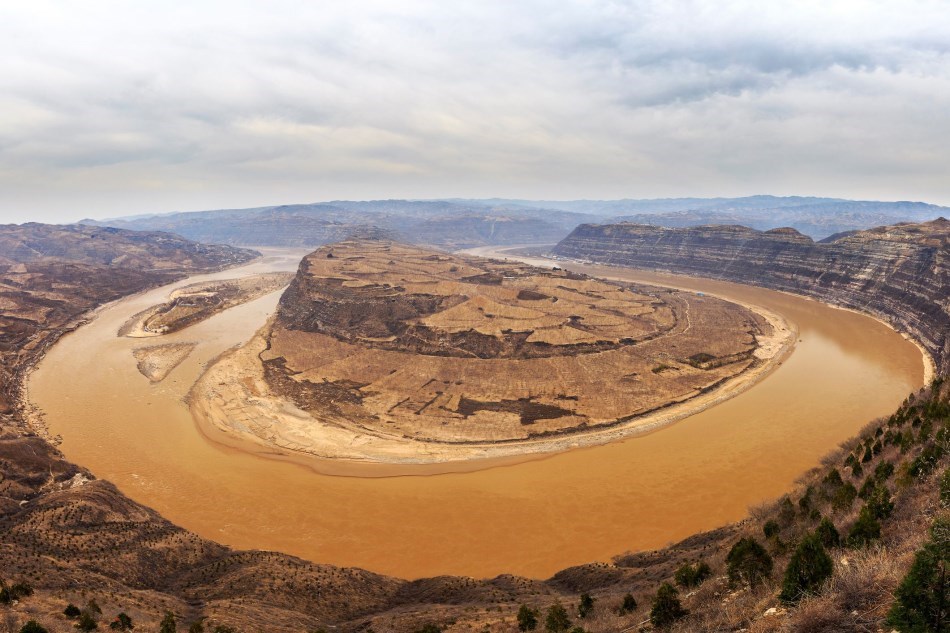The Yellow River or Huang He is the second-longest river in China, after the Yangtze River, and the sixth-longest river system in the world at the estimated length of 5,464 km (3,395 mi). Originating in the Bayan Har Mountains in Qinghai province of Western China, it flows through nine provinces, and it empties into the Bohai Sea near the city of Dongying in Shandong province.
.jpg)
The Yellow River basin has an east–west extent of about 1,900 kilometers (1,180 mi) and a north–south extent of about 1,100 km (680 mi). Its total drainage area is about 795,000 square kilometers (307,000 sq mi).
Its basin was the birthplace of ancient Chinese civilization, and it was the most prosperous region in early Chinese history. There are frequent devastating floods and course changes produced by the continual elevation of the river bed, sometimes above the level of its surrounding farm fields.
.jpg)
The middle stream of the Yellow River passes through the Loess Plateau, where substantial erosion takes place. The large amount of mud and sand discharged into the river makes the Yellow River the most sediment-laden river in the world. The highest recorded annual level of silts discharged into the Yellow River is 3.91 billion tons in 1933.
.jpg)
The highest silt concentration level was recorded in 1977 at 920 kg/m3 (57.4 lb/ft3). These sediments later deposit in the slower lower reaches of the river, elevating the river bed and creating the famous "river above ground".
According to en.wikipedia








